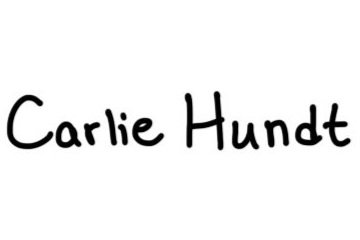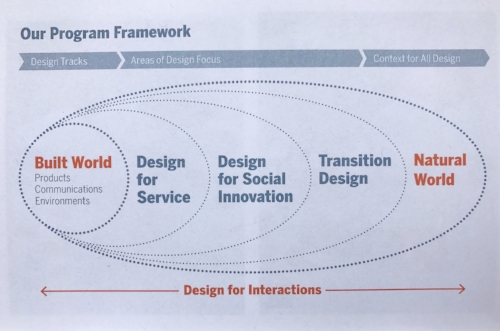Rightfully Celebrated, Dreyfuss’s Classic Memoir is a Designer’s North Star
Henry Dreyfuss designed some of the most iconic products of twentieth century America, from the Hoover 150 vacuum to the Honeywell circular thermostat. His first book, Designing for People, gives readers a chance to peer into the looking glass of early industrial design and in doing so, trace the origins of consumer products today.
Designing for People was originally published in 1955 by New York-based Allworth Press, a boutique publishing house dedicated to providing accessible information to creative communities. This work-memoir delicately explores Dreyfuss’s philosophy as an industrial designer and offers a practical look at the multifaceted value he can provide business.
This is the first of three books written by Dreyfuss, which together established him as a pioneer of the user-centered approach to design, and a predecessor to ergonomics, anthropometrics and human factors. It’s not surprising that the celebrated memoir was re-published in 1967 and 2003, and continues to be widely-read and referenced across design practices today.
Dreyfuss begins the book by sharing his early professional background as a Broadway set designer, where he was first trained to understand “what people like.” He goes on to summarize the rise of industrial design in practice, focusing in greatest detail on the twentieth century, which was largely influenced by the rise of mass production and consumerism. He refers to industrial design as the “unseen hand” that has been reshaping everything from the home and workplace, to the factory.
He spends the next chapter introducing Joe and Josephine, the average American male and female, as the cornerstones of his work. He continues to mention Joe and Josephine throughout the book (he also illustrates them inside the front cover), consistently bringing his purpose back to serving people’s physical and cognitive needs.
“The products we design are going to be ridden in, sat upon, looked at, talked into, activated, operated, or in some way used by people individually or en masse. If the point of contact between the product and the people becomes a point of friction, then the industrial designer has failed. If, on the other hand, people are made safer, more comfortable, more eager to purchase, more efficient-or just plain happier-the industrial designer has succeeded.”
Ever the guide, Dreyfuss goes on to discuss his modus operandi (work habits), who he usually works with during the design process, how he tests his work and even evaluates appropriate payment methods. In one notable section, Dreyfuss directly corrects the misconception that an industrial designer is competing for an engineer’s job. He reveals that designers are most deeply involved with engineers during the design process and that they are “the industrial designer’s best friend and severest critic.” With this, he expounds on another challenge for designers today: how to carve out unique and valuable roles within the corporate world. Throughout the book, Dreyfuss weaves in case studies with clients like Bell, Hoover, Honeywell and Lockheed. To my amazement, these projects are still widely recognized as standards in design.
The physical design of Dreyfuss’s book has the same descriptive, conversational and educational tone as the content within. He includes red-inked sketches in the outer page margins that help illustrate concepts and bring stories to life. They are playful visual elements that I noticed myself examining fairly often. A few of the chapters include black and white photos that more literally showcase examples of Dreyfuss’s work across industries. The 2003 hardcover version that I read includes a foreword from author, Tom Peters and a preface from Design Management Institute President, Earl Powell. They both honor Dreyfuss as a pioneer, giving him credit for founding the industrial design profession and educating managers and businesses around the globe.
As a novice designer who has tried, and often failed, to explain my field of study, I readily concede that Dreyfuss tackles this challenge with ease. Instead of proving his comprehension of the field through exhaustive definitions, he provides relatable and timeless examples of his work. His conversational tone and sporadic wit masterfully aids in this feat. Noticeably, there is just one instance in the book in which Dreyfuss offers an explicit definition to industrial design, quoting writer Gilbert Seldes: “Industrial design is the application of taste and logic to the products of machinery.” Dreyfuss also makes a few predictions that are harbingers of the innovation taking place across industries today. My favorite examples are when he talks about “selling a service” and predicts that “cars may one day be equipped with a radar device.” If that’s not foresight, I don’t know what is!
However, certain aspects of Dreyfuss’s legacy stand out for their blindness in hindsight. Dreyfuss lacked appropriate appreciation for environmental concerns around mass production, which has perhaps only recently become en vogue. In the 1967 version of his book, he added a reappraisal that addressed his 1955 predictions around consumer trends. To me, this was a blatant missed opportunity to include sustainability concerns. Rather, Dreyfuss’s goal to design products “that reach as many people as possible” is a practice which has contributed to the throw-away culture of today. Another cringe-worthy aspect of Dreyfuss’s work is his outdated depiction of women. Throughout the book, he portrays women as the simple homemakers and men as business-minded. Again, while this may have been a widely accepted belief in the 1950s and 1960s, it’s a narrow-minded view of society today.
Despite these shortcomings, Henry Dreyfuss’s book is the north star for all who seek to better understand what makes good design. The jargon-free read is not only a classic in the industrial design community, but also an accessible gateway book for beginners. As a design student, I couldn’t have picked a better time to read Designing for People and I can’t help but wonder what iconic products Dreyfuss would be designing today.


